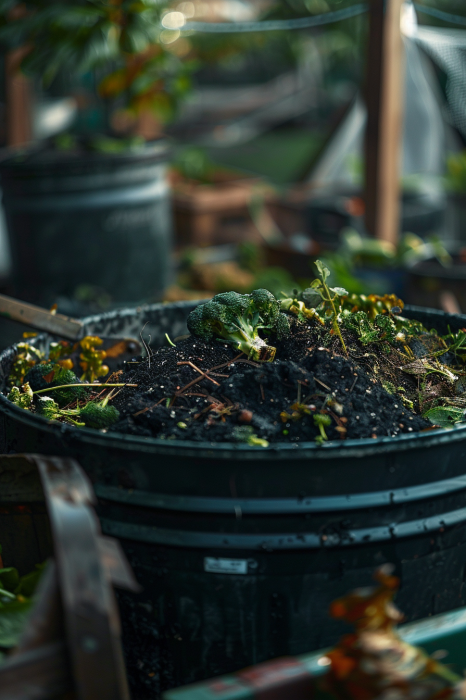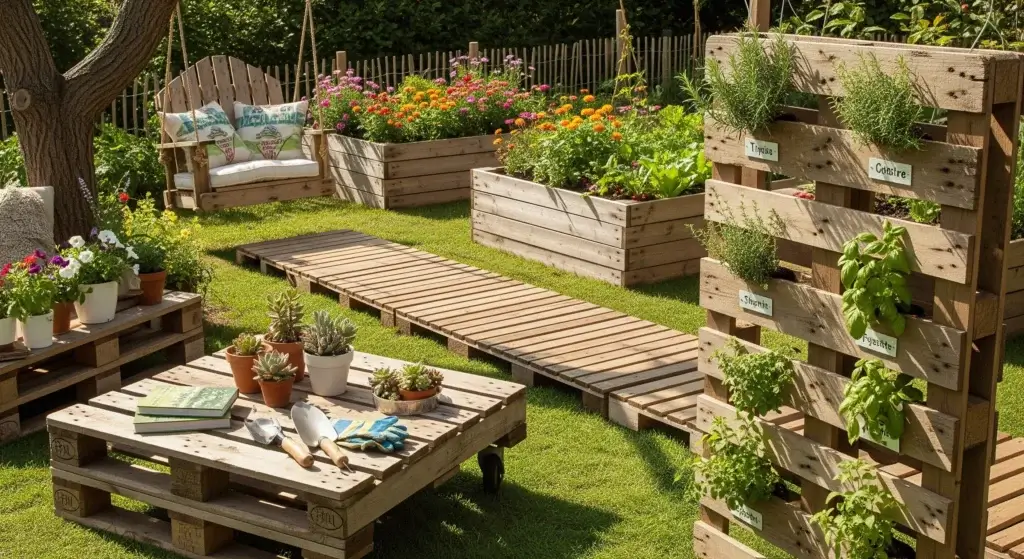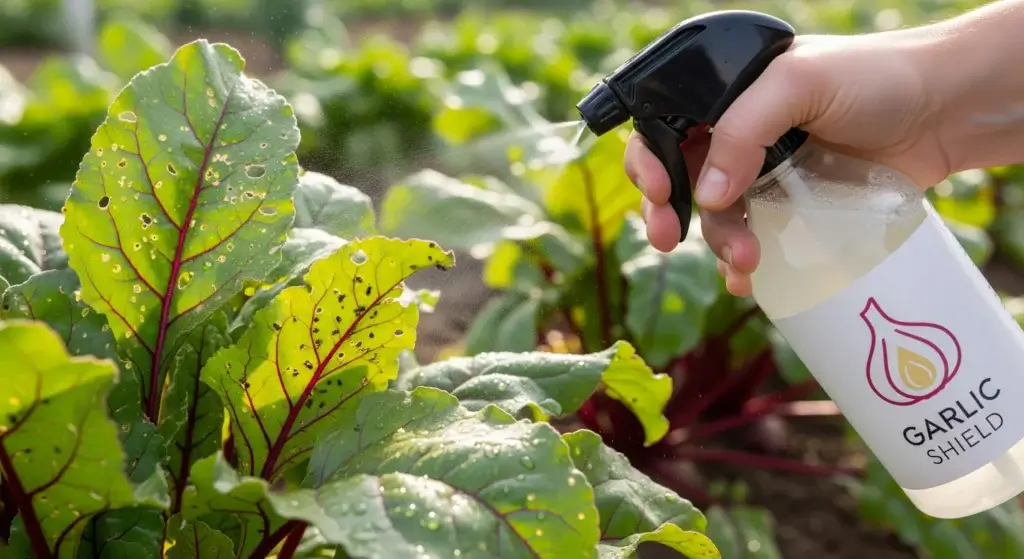
Composting broccoli scraps is a great way to reduce food waste and create nutrient-rich soil for your garden.
In this blog post, we will explore the benefits of composting broccoli, different DIY composting methods, and how to compost broccoli scraps using a composting bin and Bokashi composting.
Benefits of Composting Broccoli
Broccoli, a delicious cruciferous vegetable, doesn’t just provide us with valuable nutrients; its leftover parts can also contribute significantly to our gardens.
Composting broccoli scraps offers a wealth of benefits, not just for the environment but also for your future harvests.
Let’s explore some of the key advantages:
- Read also: Inorganic vs Organic Fertilizers
- Read also: DIY Plant Food for Vegetables
Enriched soil, thriving plants
Broccoli scraps, categorized as “green” materials in composting, are rich in nitrogen, a vital element for plant growth.
Composting these scraps breaks them down into usable nutrients, making them readily available for future plants, including, of course, broccoli!
This translates to healthier soil, promoting stronger roots, vibrant foliage, and ultimately, better yields.
Reduced waste, increased sustainability
Food waste contributes significantly to landfills.
Composting broccoli scraps diverts them from landfills, minimizing environmental impact and promoting sustainable practices.
By creating your own compost, you are not only reducing waste but also reducing reliance on commercially produced fertilizers, further contributing to a greener footprint.
Closed-loop system for your garden
Composting broccoli scraps creates a closed-loop system within your garden.
The nutrients from the broccoli plant return to the soil, enriching it for the next generation of broccoli to flourish.
This self-sustaining cycle promotes resourcefulness and reduces dependence on external inputs, making your gardening practice more sustainable and eco-friendly.
Cost-effective fertilizer
Purchasing fertilizers can add up over time.
Composting broccoli scraps provides a free, natural, and nutrient-rich alternative to store-bought fertilizers.
By creating your own compost, you can save money while enriching your soil and promoting healthy plant growth.
Improved soil structure and drainage
Composting adds organic matter to the soil, which helps improve its structure and drainage.
This allows for better aeration, water retention, and nutrient availability for plants.
This improved soil quality benefits not only your broccoli, but also other plants in your garden.
DIY Composting Methods
Composting bin

Composting bins offer a practical and eco-friendly approach to managing organic waste while producing nutrient-rich compost for your garden.
Types of composting bins
Tumbler bin
Tumbler bins are cylindrical containers mounted on a frame, allowing them to be easily rotated.
This design facilitates aeration and mixing of compost materials, expediting the decomposition process.
Tumbler bins are ideal for those seeking efficient composting with minimal effort.
Worm bin
Worm bins, also known as vermicomposting bins, harness the power of composting worms to break down organic matter.
These bins typically consist of stacked trays, providing a habitat for worms to thrive while converting food scraps into nutrient-rich vermicompost.
Worm bins are well-suited for indoor composting and smaller spaces.
Traditional bin
Traditional composting bins come in various sizes and designs, ranging from simple homemade structures to commercially available models.
These bins rely on natural decomposition processes, with organic materials layered and periodically turned to encourage microbial activity.
Traditional bins offer versatility and are suitable for outdoor composting in gardens or yards.
Step-by-Step Guide
Prepare the bin
Begin by selecting a suitable composting bin and placing it in a convenient location. Ensure proper aeration and drainage to support decomposition.
Add broccoli scraps
Collect broccoli scraps, including stems, leaves, and florets, and add them to the composting bin. Chop or shred larger pieces to accelerate decomposition.
Mix with other compostable materials
Layer the broccoli scraps with other compostable materials such as kitchen scraps, yard waste, and brown materials like shredded paper or dried leaves.
Aim for a balanced mix of nitrogen-rich (green) and carbon-rich (brown) materials.
Monitor and turn
Regularly monitor the compost pile’s moisture level and temperature. Use a pitchfork or compost turner to aerate and mix the materials, promoting decomposition and preventing odors.
Let it decompose
Allow the composting process to unfold naturally, typically taking several weeks to several months depending on environmental conditions and the composting method used.
With time, the broccoli scraps will break down into nutrient-rich compost ready for use in your garden.
Advantages of Using a Composting Bin
Ease of use
Composting bins offer a user-friendly solution for managing organic waste. With minimal maintenance and regular turning, anyone can successfully compost kitchen scraps and yard waste.
Cost-effective
Investing in a composting bin eliminates the need for expensive disposal services and reduces the amount of waste sent to landfills.
By recycling organic materials, you save money while contributing to environmental sustainability.
Produces high-quality compost
Composting bins yield nutrient-rich compost, often referred to as “black gold,” that enriches soil health and promotes plant growth.
This homemade compost is free from synthetic chemicals and serves as a natural fertilizer for your garden, resulting in vibrant, thriving plants.
Bokashi composting

Bokashi composting is a unique and efficient method that allows you to compost kitchen waste, including broccoli scraps, with minimal odor and space requirements.
Step-by-step guide
Choose a bokashi bucket
Begin by selecting a Bokashi bucket with a tight-sealing lid. The airtight container creates an anaerobic environment crucial for the fermentation process.
Add broccoli scraps
Collect broccoli scraps, including stems and florets, and add them to the Bokashi bucket. Chop or shred larger pieces to facilitate the fermentation process.
Mix with bokashi bran
Sprinkle a layer of Bokashi bran over the broccoli scraps. Bokashi bran is a mixture of bran and effective microorganisms (EM) that kickstarts the fermentation process.
Ensure the scraps are well-coated with the bran.
Compact and seal
Press down on the composting material to eliminate air pockets and then seal the Bokashi bucket tightly. This anaerobic environment encourages the growth of beneficial bacteria that ferment the organic matter.
Repeat the layering
Continue adding layers of kitchen waste, including broccoli scraps, followed by a sprinkling of Bokashi bran. Compact each layer and seal the bucket after each addition.
Let it ferment
Allow the contents of the Bokashi bucket to ferment for about two weeks.
During this period, the beneficial microorganisms break down the organic matter into a nutrient-rich pre-compost material.
Bury or compost
After the fermentation process is complete, bury the Bokashi pre-compost in your garden soil or add it to an outdoor compost pile.
Alternatively, you can mix it with soil in a traditional compost bin.
Advantages of using Bokashi Composting
Produces high-quality compost
Bokashi composting results in a nutrient-dense, fermented compost that enhances soil fertility.
The pre-compost material can be directly added to garden soil, providing plants with a rich source of beneficial microorganisms.
Reduces odor
Unlike traditional composting methods, Bokashi composting significantly reduces unpleasant odors.
The airtight environment prevents the release of foul-smelling gases associated with decomposing organic matter.
Suitable for small spaces
Bokashi composting is particularly advantageous for individuals with limited space, including those living in apartments or urban environments.
The compact Bokashi bucket can be easily accommodated in small kitchens, making it a practical choice for urban dwellers.

- Read also: Homemade Plant Insect Spray for a Healthy Garden
- Read also: DIY Plant Watering Bottle Ideas
Conclusion
Composting broccoli scraps is a great way to reduce food waste and create nutrient-rich soil for your garden.
Whether you choose a composting bin or Bokashi composting, you can create high-quality compost that will promote healthy plant growth and save money on fertilizers.
By following these simple steps, you can create a sustainable and cost-effective way to compost broccoli scraps.



